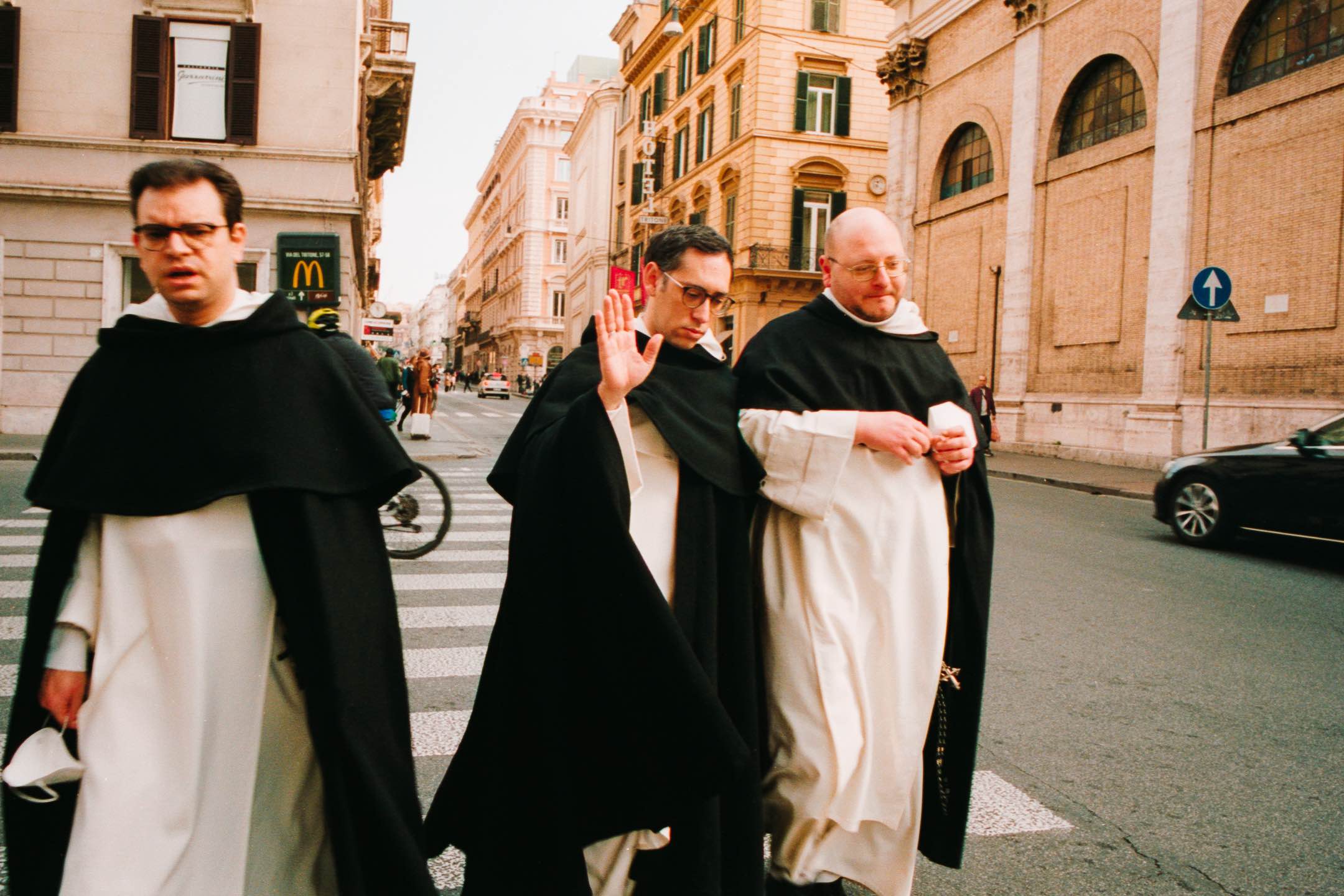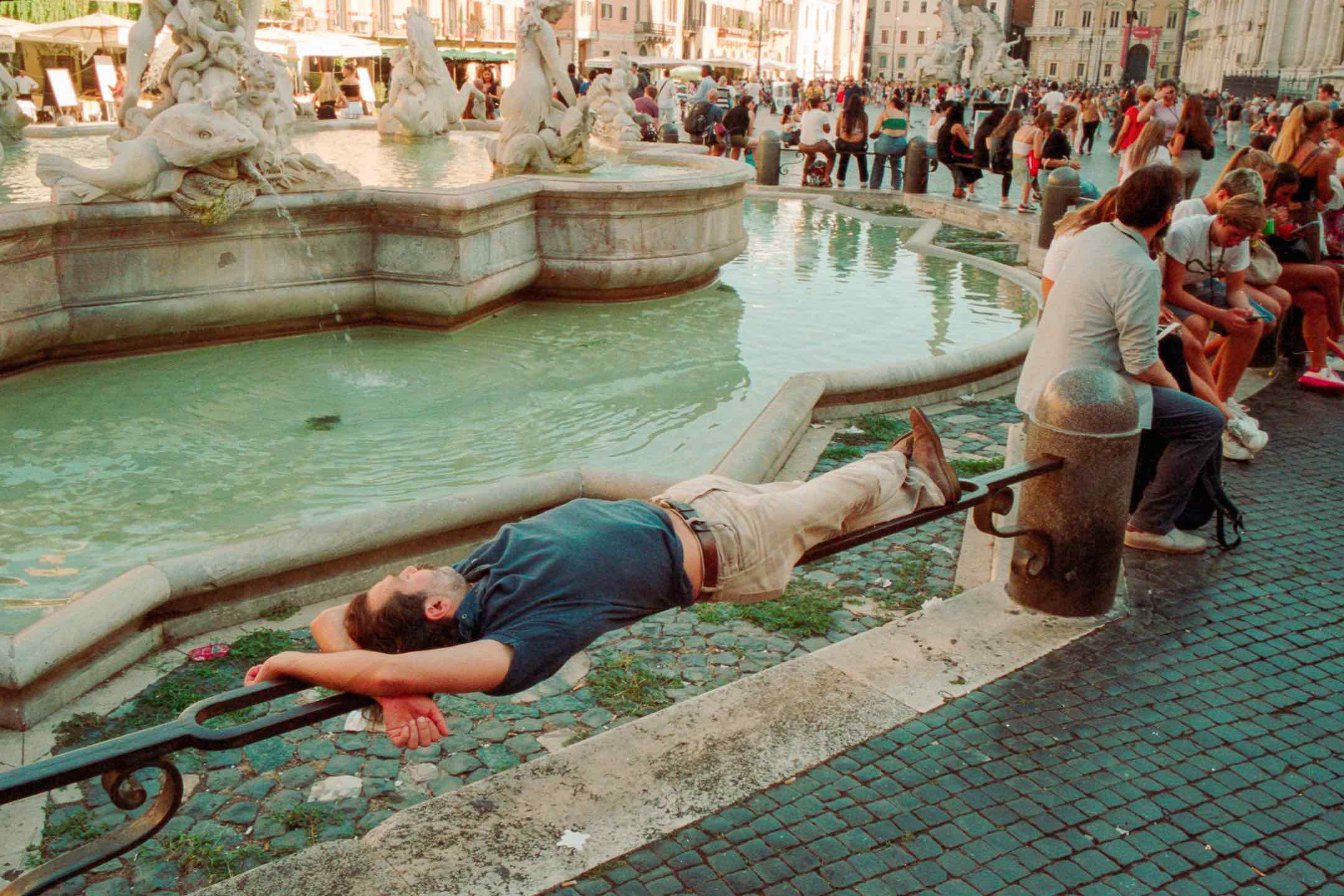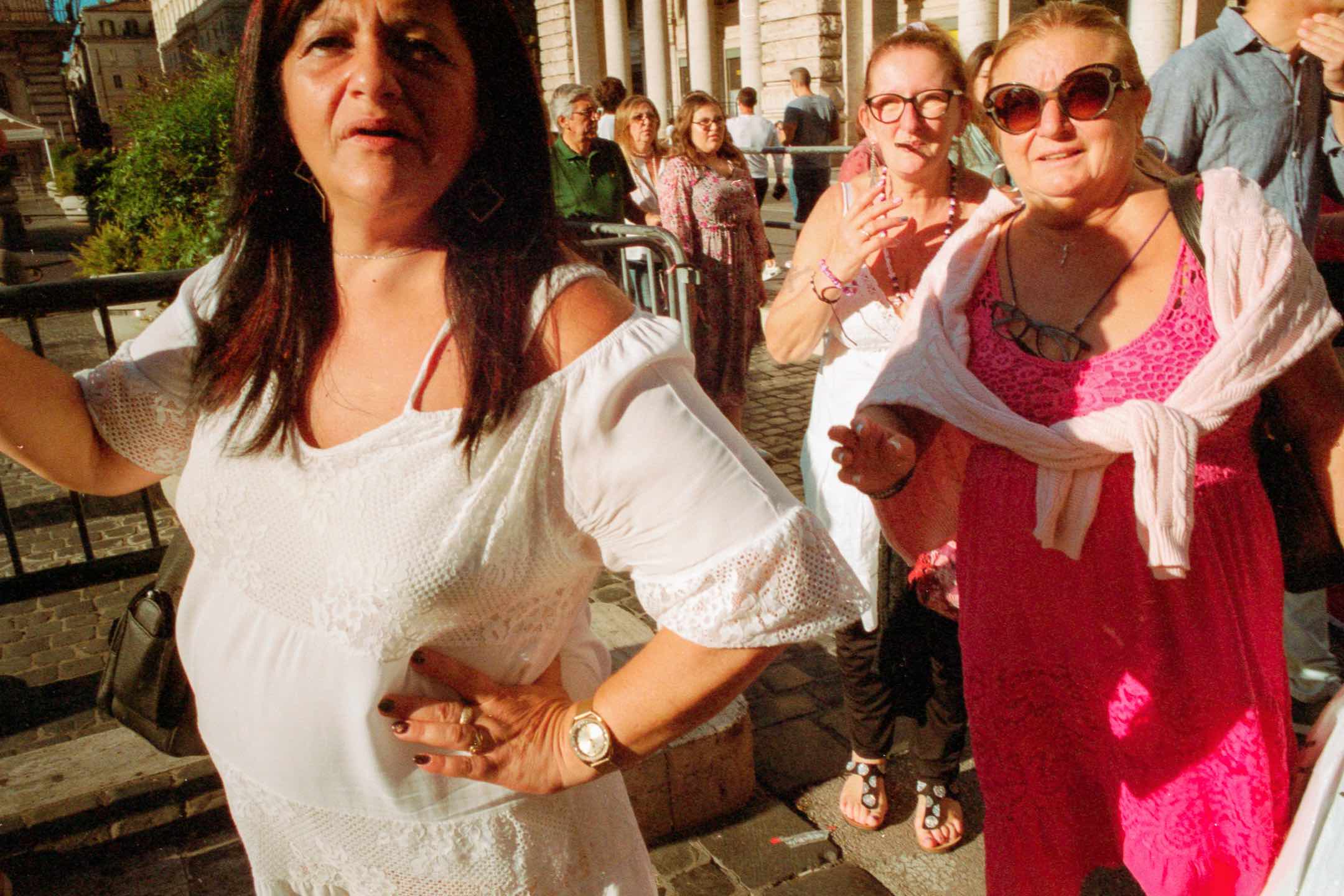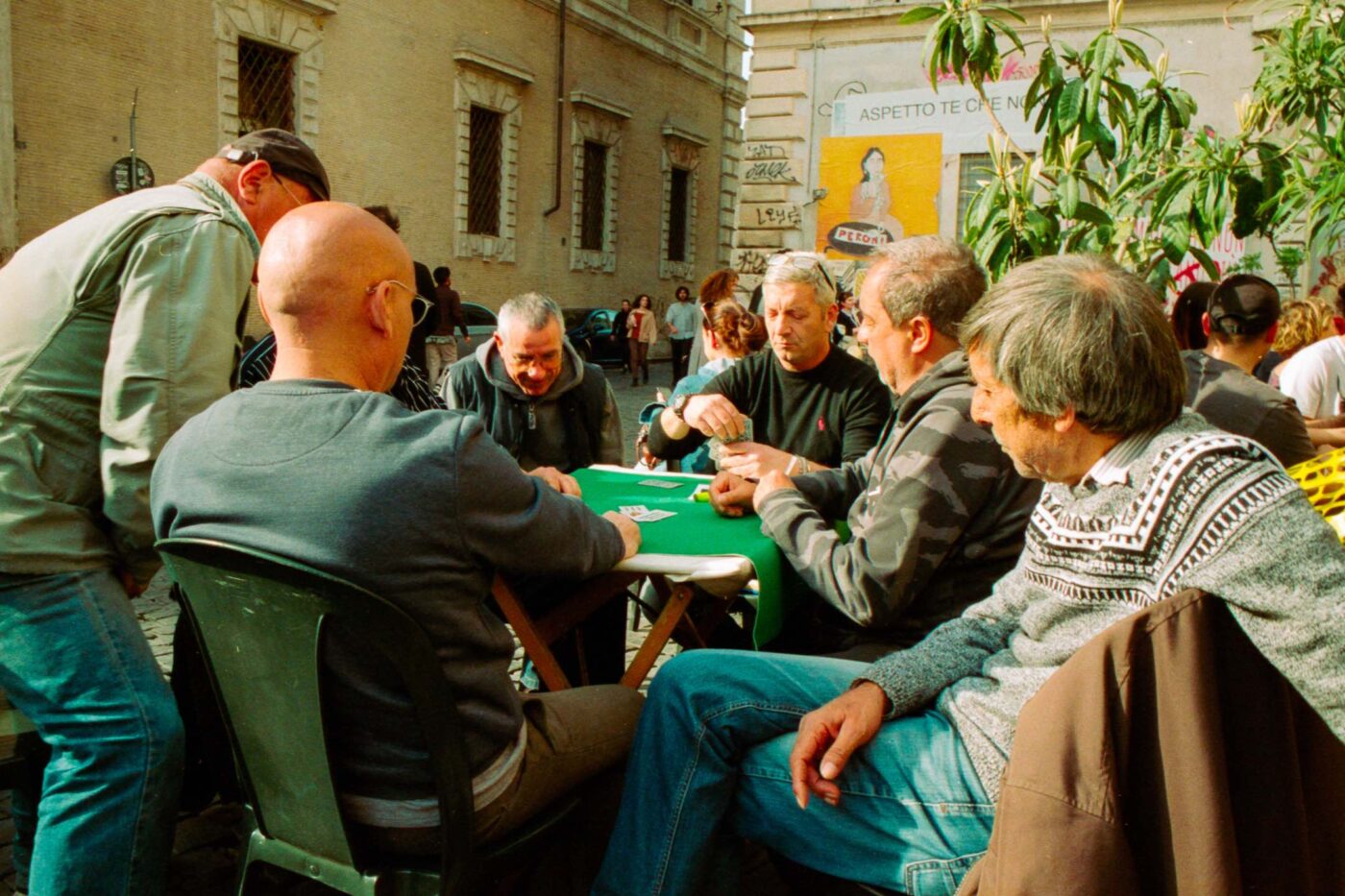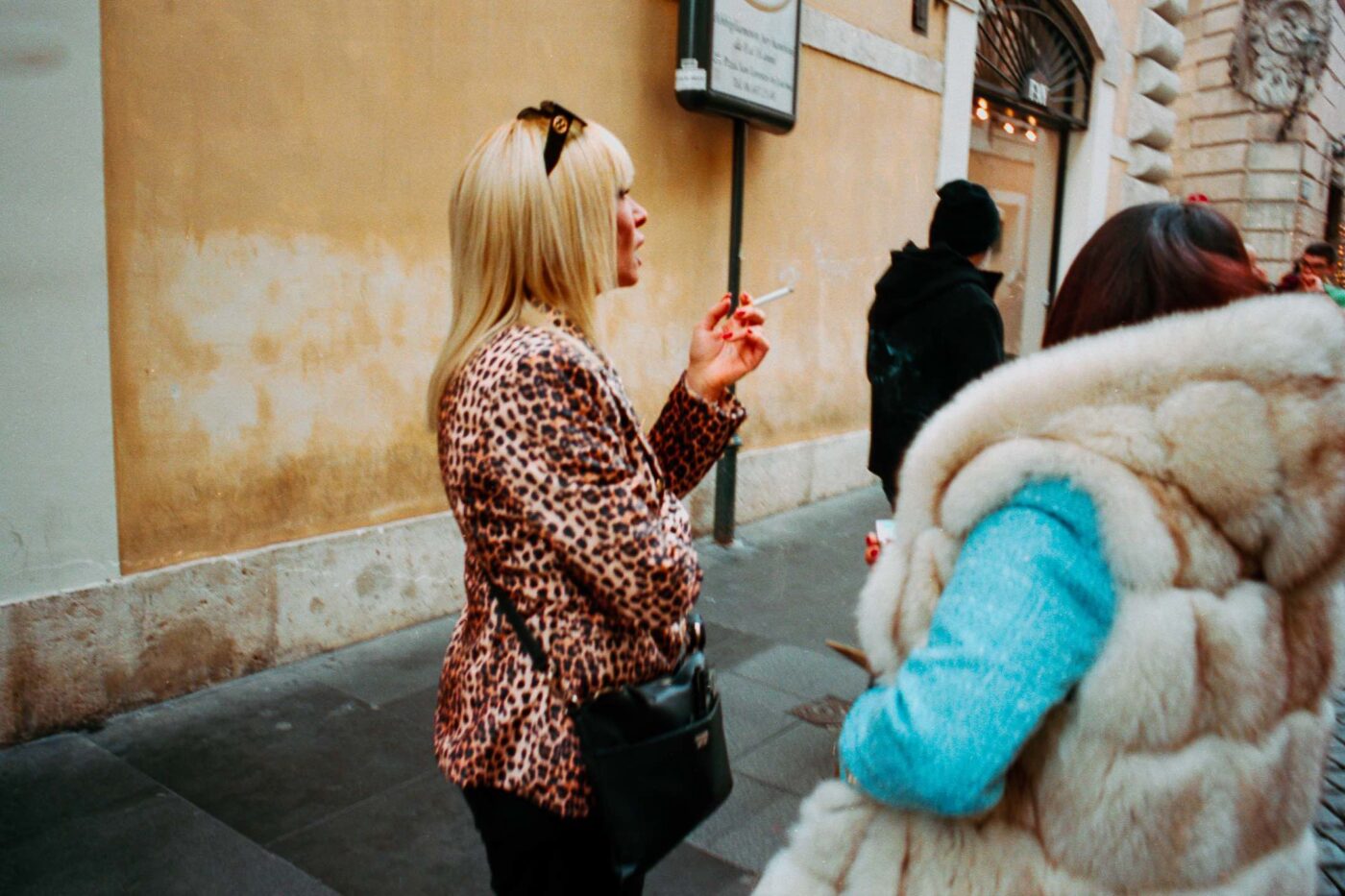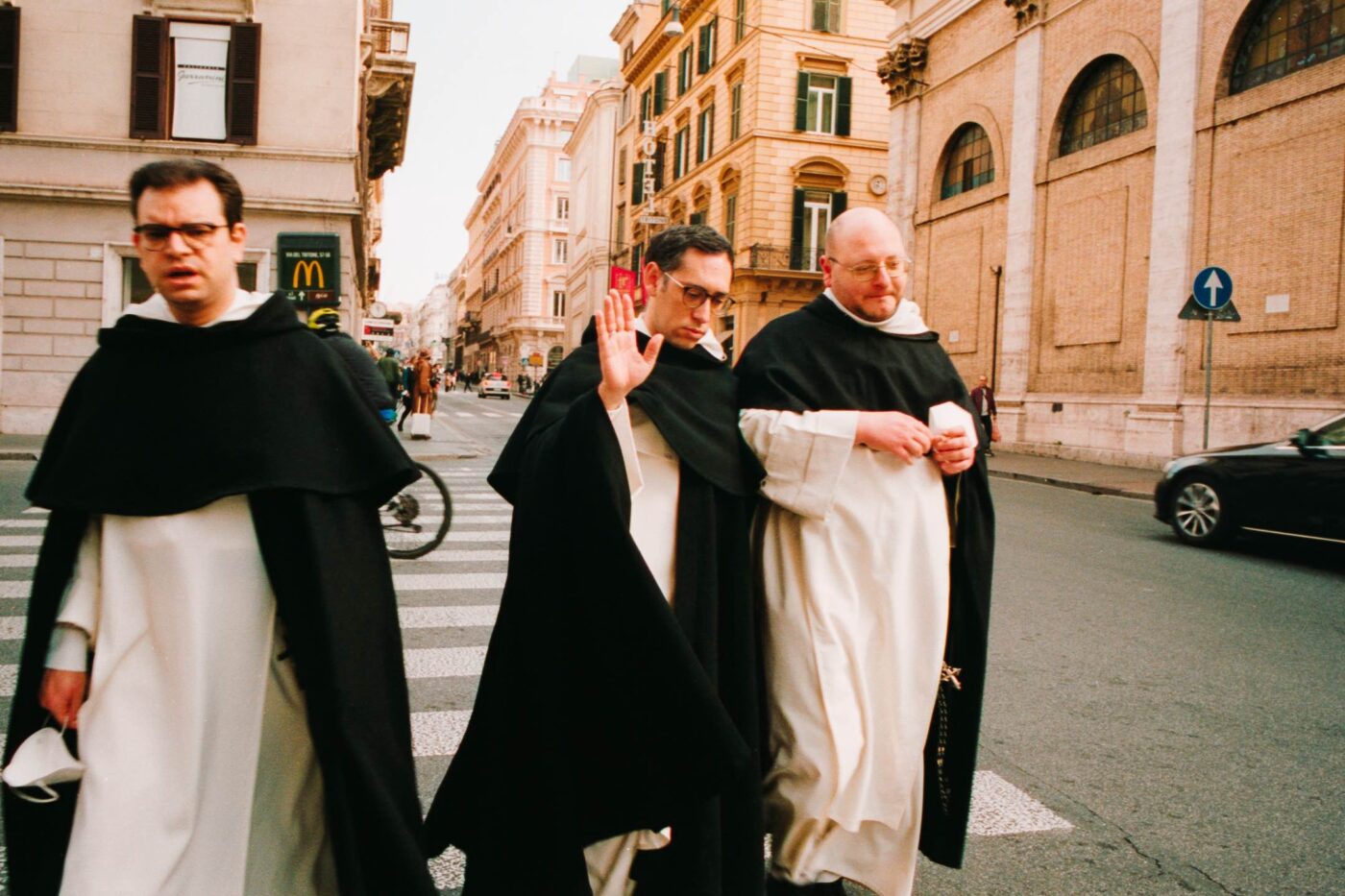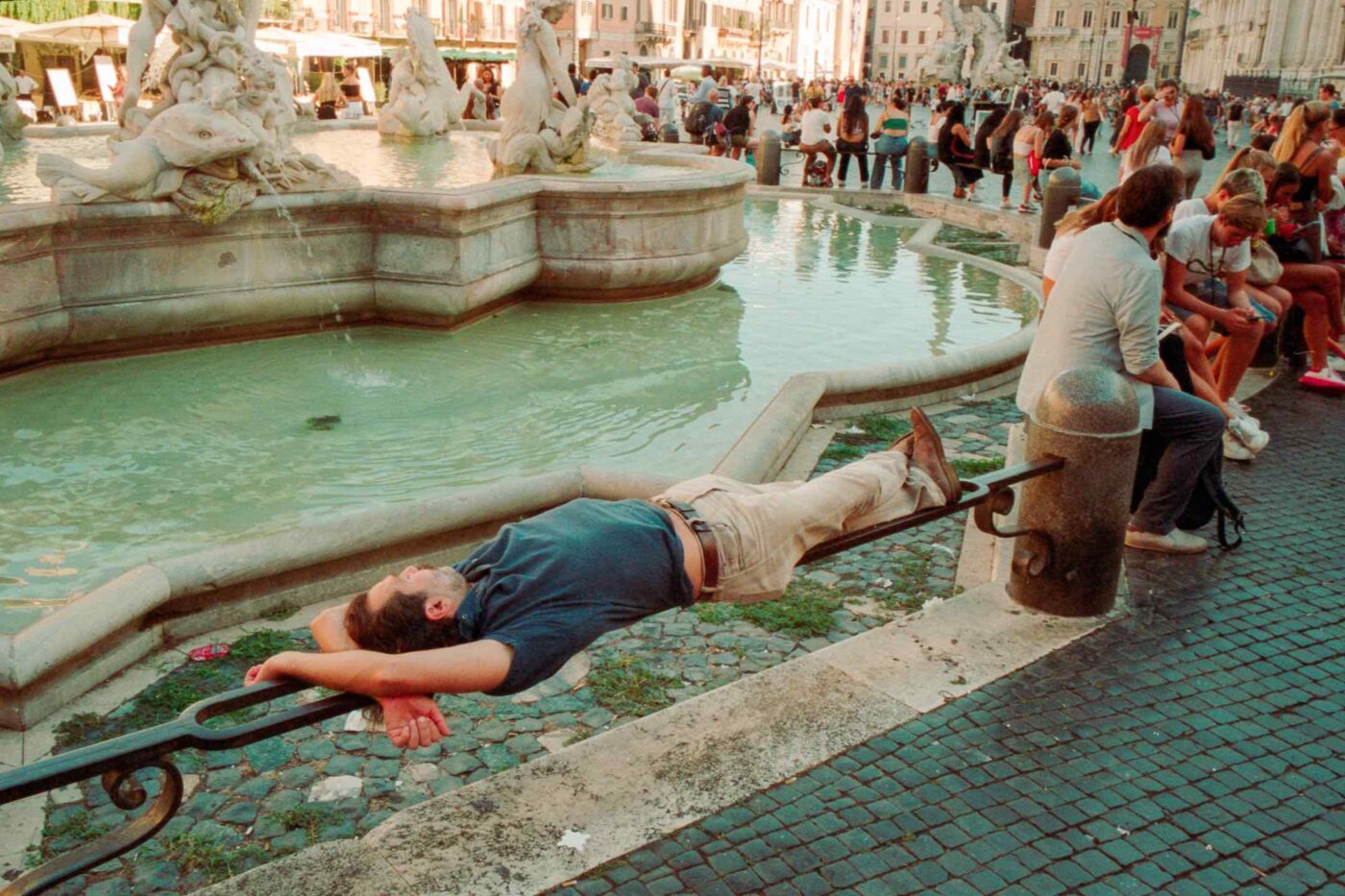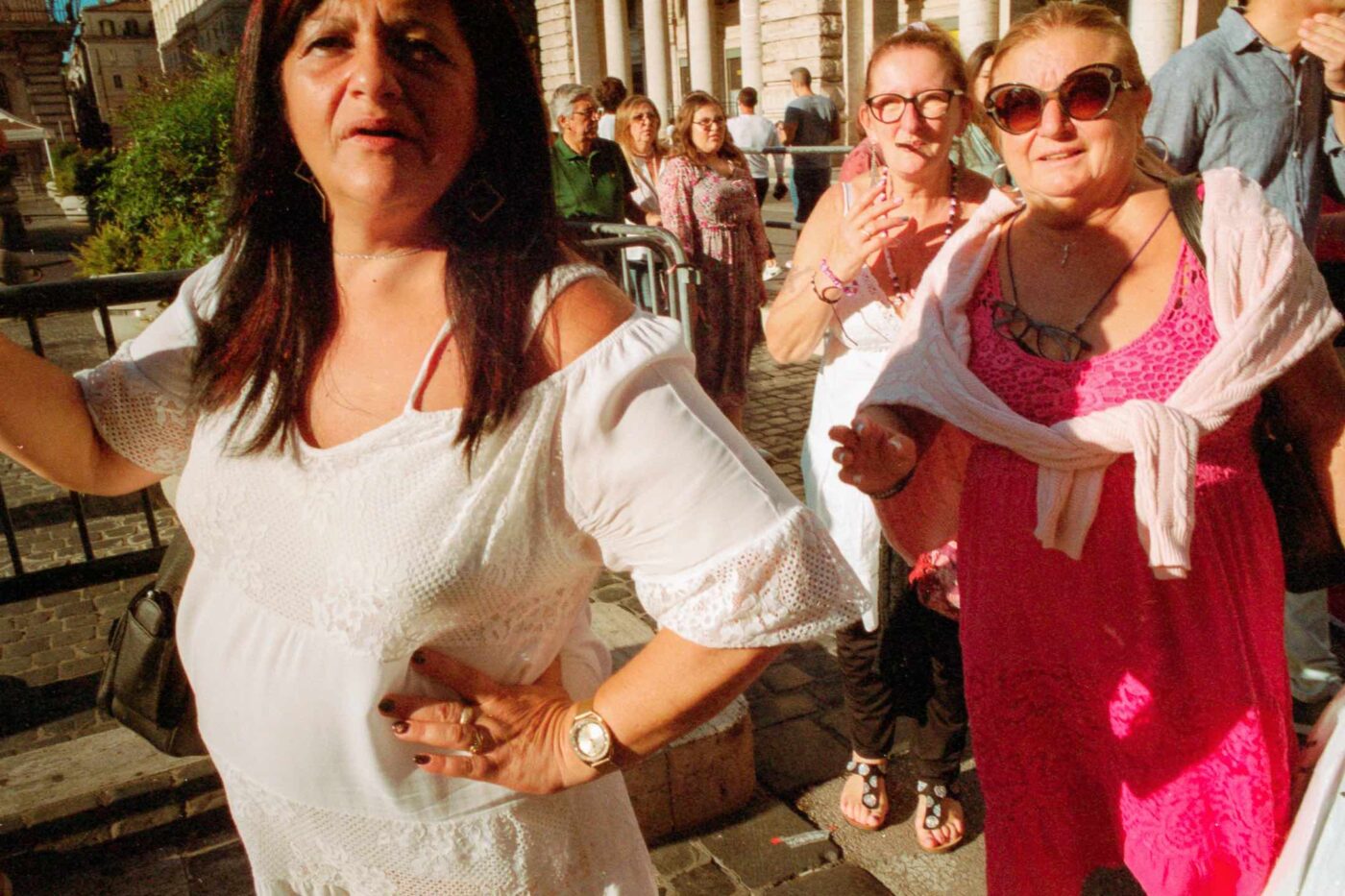Sometimes referred to as “Romanaccio”–with the pejorative “accio” suffix emphasising its vulgar, bawdy qualities–this dialect is no-nonsense and direct, a linguistic embodiment of the Roman people. Listen for the dropping of vowels and the doubling of consonants–quando becomes quanno, ogni becomes gni–as well as prolific swearing, profanity, and the word “moccolo”, used frighteningly frequently, but stripped of the offensiveness that it carries in Standard Italian.
Romanaccio is funny. The comic associations with the dialect are, in part, a result of the works of film directors such as Carlo Verdone, who often includes over-the-top uses of dialect for humorous effect. (See: the scene in Acqua e sapone in which the protagonist tries and fails to convince his grandmother to respond to his questions in Standard Italian rather than Roman dialect.) When I ask Licia (age 42, Montesacro) what she would define as the main characteristic of Romanesco, she replies simply that it makes people laugh.
Like the Roman people, this dialect is constantly evolving. The influx of people from other parts of Italy and abroad in the country’s capital means new colourful additions to the ever-changing Romanesco, resulting in a sort of hybrid dialect coined by the media as “Romanoide”. There is no such thing, then, as one singular way that Romans speak, instead varying as you weave through the winding streets of the ancient capital. But this disparity in speech is perhaps most evident in Rome’s widely recognised neighbourhood divide: Roma Nord vs Roma Sud.

This age-old rivalry between the north and south of the city is centred around the seemingly endless, if often generalised, differences between their inhabitants. Roma Nord–made up of neighbourhoods such as Prati, Flaminio, and Parioli–is an expanse of sports grounds, chic shops, and nightclubs you frequent to see and be seen. Boasting the reputation of encompassing “i quartieri ricchi” (“the rich neighbourhoods”), Roma Nord is known for largely being occupied by the wealthy, healthy elite of Roman society. Its counterpart (read: rival) Roma Sud, is a historically poorer area of the capital. Covering neighbourhoods like Ostiense, Portuense, and Europa (among others), Roma Sud is busy, vibrant, and goes hand in hand with the Roman tendency essere caciarone (to cause chaos). In typical Italian fashion, the difference between north and south begins with food. While the inhabitants of Roma Nord are known for perpetually dieting, manifested in their reputation for eating sushi or vegan food, those of Roma Sud–who have “la bocca buona”, or, in other words, aren’t fussy about what they eat–can be spotted eating classic, hearty Roman dishes like spaghetti all’Amatriciana. While Roma Nord drives cars, Roma Sud drives scooters. While Roma Nord plays squash and tennis, Roma Sud plays football… the list goes on.
These contrasts filter their way, inevitably, into language. Citizens of Roma Sud are labelled “bori”, coming from “borgatoro”–someone who lives in the borgate, the suburbs. The stereotype of er boro is one with loud, blunt speech, and outfits made up almost exclusively of tracksuits and sportswear, no matter the occasion. Those of Roma Nord, on the other hand, are known as “Pariolini”, a reference to the Parioli district. Sleek, chic, and “un po snob”, the Pariolino is someone who has a luxurious lifestyle and isn’t afraid to show off about it. The expression “Lavi-Cami-Flami” is sometimes used to poke fun at the Pariolini–a reference to the recurrence of the traditional names Lavinia, Camilla, Flaminia amidst the girls of Roma Nord. Similar wordplay features in a now-viral TikTok song, “La Pariola Romana” by TikTokers Ilaria and Caterina: ‘‘È la tipica pariola romana, magna sushi ogni settimana, se sei de Roma Sud te guarda strana, per lei sei un’ortolana…” (“She is the typical Roman ‘pariola’, she eats sushi every week, she gives you strange looks if you come from the south of Rome, to her you are a farmer.”)
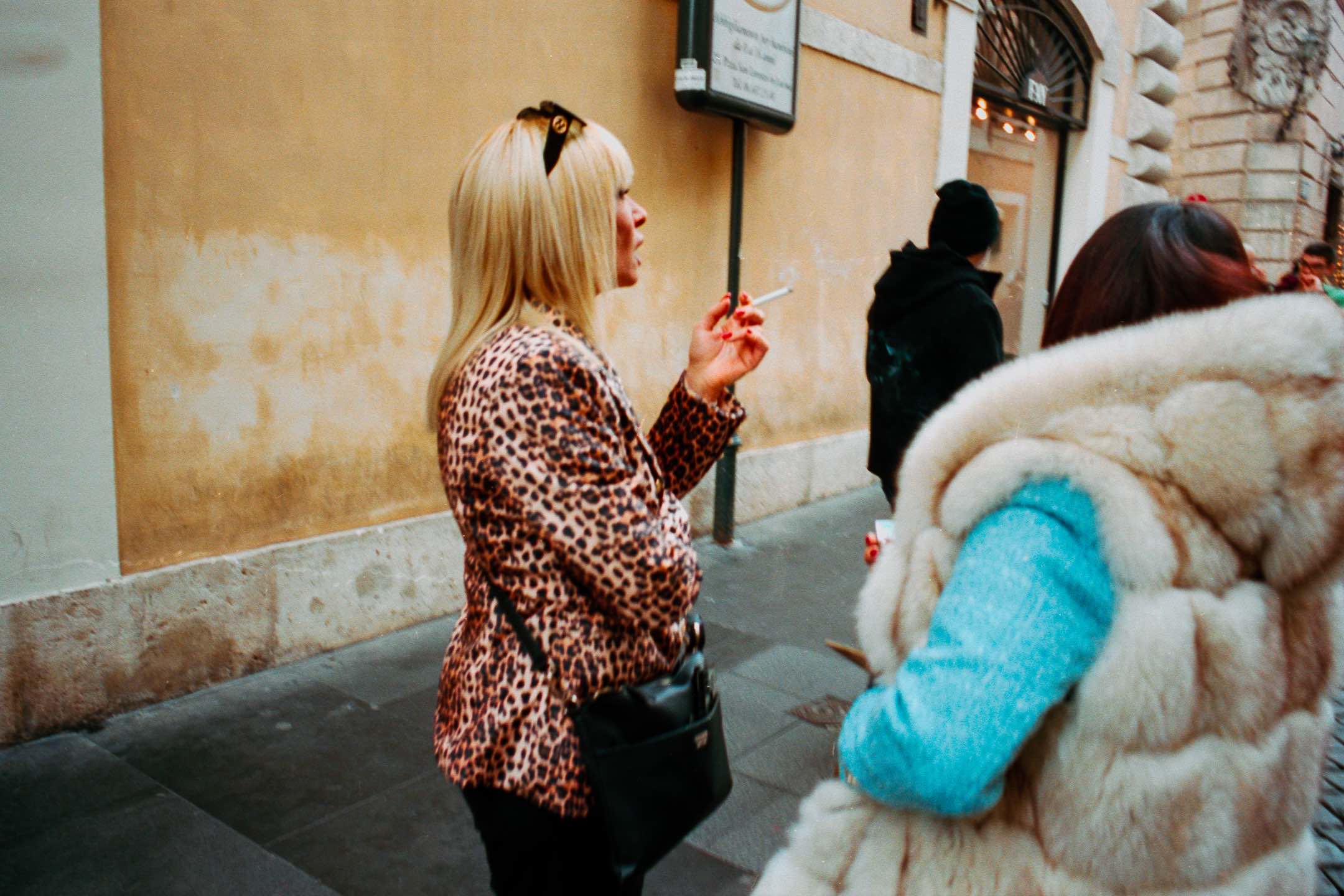
But language does not just address this north-south divide, it is an ingrained part of the variance. Ornella (age 63, Campo de’ Fiori) tells me that the Pariolini speak in a way typical of “Roma bene”, avoiding swear words and speaking articulately, and use the Romanesco dialect largely “per gioco” (to joke around). In Roma Sud, however, dialect forms a much more significant part of everyday speech. Listen out for words like “Aò!” (“hello!”) and “amazza!” (“wow!” Or, more literally, “kills”) if pacing the streets of Ostiense. The famous “daje” (the Romanesco version of the iconic Italian “dai”), accompanied with a generous gesture of “ma che vuoi” (the equally iconic pinched hand gesture) tends to be peppered throughout heated interactions. Here, the Roman accent is thicker, and, in some areas, the dialects and accents are influenced by the higher proportion of a multi-lingual migrant population. While “daje” forms a key part of the vocabulary of the average “boro”, anglicised expressions such as “mezzo che top” (“pretty good”) are thrown around by the Pariolini of Roma Nord, along with frequent exclamations of words like “adoro!” (“I love!”).
The veraciously Roman quality of the southerners, and the English or Milanese associations with the northerners reflects itself too in their body language. Ornella explains that while a Pariolino may hold themselves in a poised, albeit restrained, manner, a Boro is more likely to be spotted doling out exaggerated hand gestures to underline what they are saying–or to say it for them.
This brotherly rivalry between Roma Nord and Roma Sud is a popular cultural topic, and recently has become the subject of comedic web series “Romolo + Giuly”, a parody of Romeo and Juliet in which a Roma Nord family and a Roma Sud family compete for power over Rome. Yet, despite the light-hearted caricatures of the city’s divide, the linguistic and behavioural variations between Rome’s North and South reveals a deeper issue of financial and social inequality. The good news is, things are changing; the wealth divide from which these stereotypes originated is starting to close up. And so, despite the seemingly uncrossable chasm between the “daje” and “mezzo che top” utterers of Rome, you may find that you hear a parolaccia (bad word) or two in Roma Nord, or spot a gaggle of designer clad Cami, Lavi, and Flami’s in Roma Sud, off to check out Pigneto’s hottest new bar.
